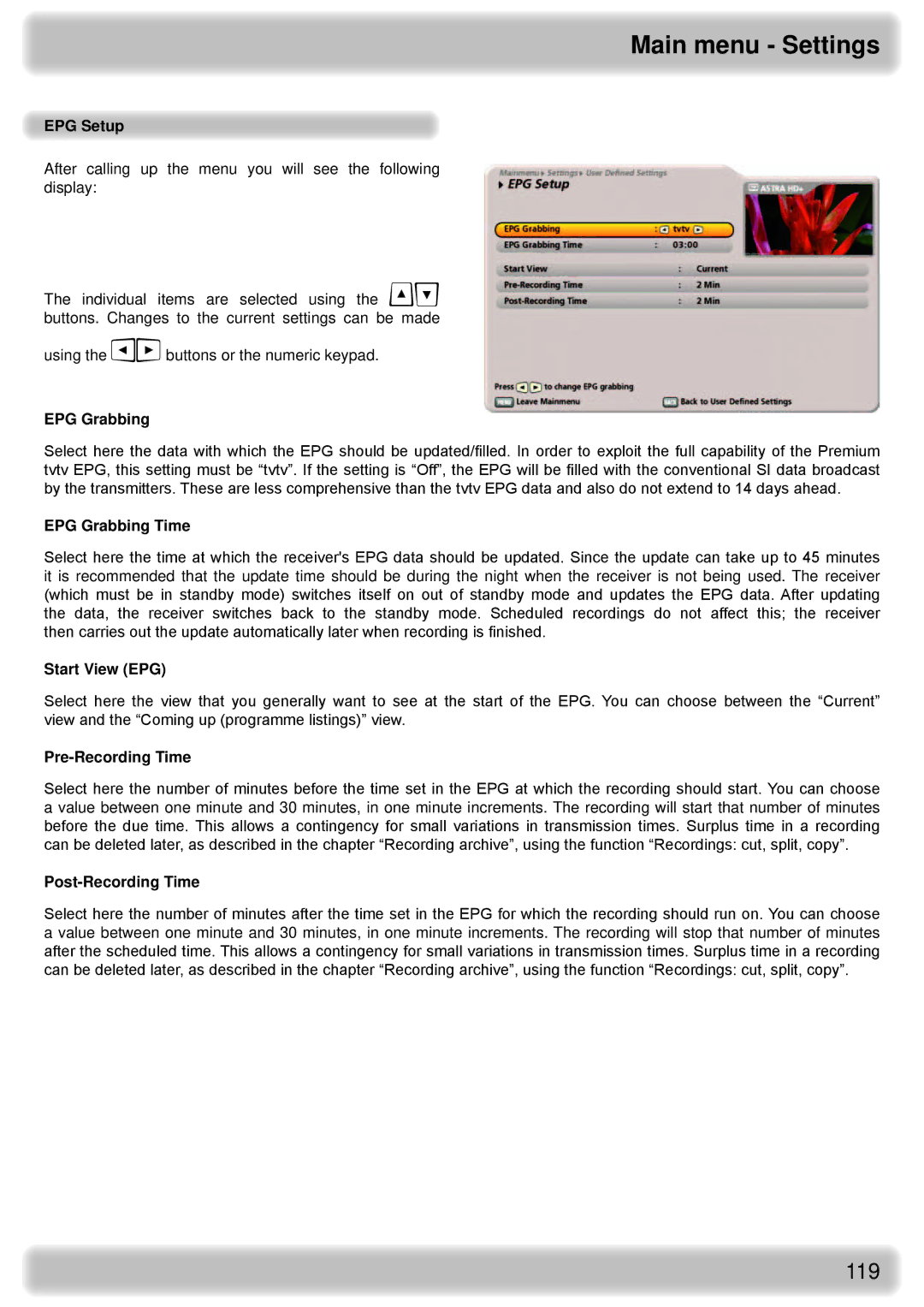
Main menu - Settings
EPG Setup
After calling up the menu you will see the following display:
The individual items are selected using the buttons. Changes to the current settings can be made
using the buttons or the numeric keypad.
EPG Grabbing
Select here the data with which the EPG should be updated/filled. In order to exploit the full capability of the Premium tvtv EPG, this setting must be “tvtv”. If the setting is “Off”, the EPG will be filled with the conventional SI data broadcast by the transmitters. These are less comprehensive than the tvtv EPG data and also do not extend to 14 days ahead.
EPG Grabbing Time
Select here the time at which the receiver's EPG data should be updated. Since the update can take up to 45 minutes it is recommended that the update time should be during the night when the receiver is not being used. The receiver (which must be in standby mode) switches itself on out of standby mode and updates the EPG data. After updating the data, the receiver switches back to the standby mode. Scheduled recordings do not affect this; the receiver then carries out the update automatically later when recording is finished.
Start View (EPG)
Select here the view that you generally want to see at the start of the EPG. You can choose between the “Current” view and the “Coming up (programme listings)” view.
Pre-Recording Time
Select here the number of minutes before the time set in the EPG at which the recording should start. You can choose a value between one minute and 30 minutes, in one minute increments. The recording will start that number of minutes before the due time. This allows a contingency for small variations in transmission times. Surplus time in a recording can be deleted later, as described in the chapter “Recording archive”, using the function “Recordings: cut, split, copy”.
Post-Recording Time
Select here the number of minutes after the time set in the EPG for which the recording should run on. You can choose a value between one minute and 30 minutes, in one minute increments. The recording will stop that number of minutes after the scheduled time. This allows a contingency for small variations in transmission times. Surplus time in a recording can be deleted later, as described in the chapter “Recording archive”, using the function “Recordings: cut, split, copy”.
119
